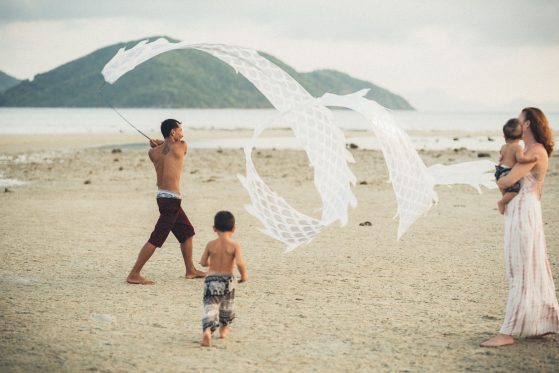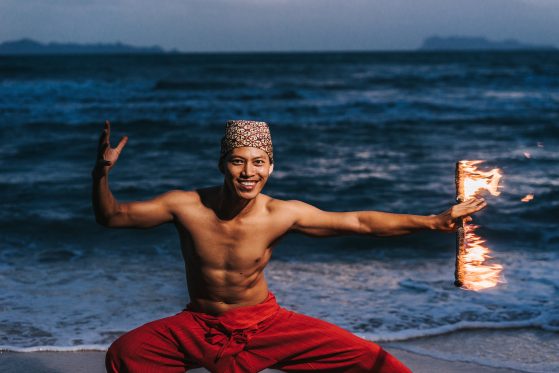
History of Samui Circus Studio
History of Samui Circus Studio
History of Samui Circus Studio:
“I feel strongly that we need a place where we can work with friends and a group of people who are doing what they love, from any art form. We need a place that is comfortable, where you can try out any idea you want with the support and advice of other people” – Poppy
Read MoreContributors :
Dr. Tiffany Pollock is a researcher based in Canada. Her work has looked at how performers use dance, music and arts practices as forms of activism, identity creation and as platforms that allow them negotiate the complexities of their lived experiences. She is particularly interested in how communities form through particular arts practices, and how belonging, inclusion and exclusion are created and contested. She has worked with communities involved in many diverse forms of artistry such as fire art, salsa dance, Inuit drumming and throating singing, hip hop (MCing and breaking), among others.
The Idea :
History of Samui Circus Studio : The idea for Samui Circus Studio was developed over years of fire art practice, friendships and knowledge shared by many people since the early 2000s. Poppy, who co-founded the studio with his wife Marion, found his love for fire juggling studying with Master Pi Oud, one of the first Thai fire artists. As Poppy was walking home from school one day in the early 2000s, he saw a community of people practicing flow art at Bangkok’s Santichaiprakhan Park. Poppy was mesmerized by the way people moved and played with different toys he had never seen before, and soon after, he joined them. Pi Oud led the group and would come with three suitcases full of juggling and flow art toys, and people would go there to play together each day as they built a passion for flow art and enjoyed time as a community. At that time, the park was the only place in the country where one could see fire art regularly, and people from all over the world came together to share – toys, knowledge, fire art and techniques – with each other. Poppy practiced with this group every day after school for four years before leaving for the islands to try and make a career as a fire art performer.
About Poppy :
History of Samui Circus Studio : Fire art was not a well-known or acceptable career at that time, and Poppy’s family did not understand his decision. But, he was determined to pursue this path. Upon moving to Koh Phangan, Poppy realized the island scene was very different than the park where he practiced and he had new challenges to face; he had to learn to speak English, sell fire art a business and create relationships with clients to grow his career. Poppy succeed with the help of friends and his persistence. After years of performing professionally between Koh Samui and Koh Phangan islands, Poppy and his family were proud that his dream of doing fire art as a career was being fulfilled, but he missed the community feeling that he knew from Santichaiprakan Park and dreamed of having a space where people could gather to share their artistic passions. After 11 years of dancing on the islands, and establishing himself as a well-known fire artist in Thailand, Poppy wanted to create something that was his own, a place where he could continue to pursue his career but that was guided by the principles of community-building and creative exploration that were taught to him by Master Pi Oud.
The Begining of the project:
History of Samui Circus Studio : In 2014, Poppy met his wife Marion who had come to Koh Samui from France to do her internship for her Master’s Degree in Tourism, Event Planning and E-Tourism. With her knowledge of marketing, Marion helped Poppy to create and develop the place he dreamed of. Together, they began to plan. The studio started in 2014 as an abandoned empty building and with the help of friends, they painted and decorated the walls, and bought and built flow art toys and furniture to create a space for the community to come together. Poppy went all over Koh Samui and beyond to reunite with some of his former students and fellow dancers so that they could join the studio and create shows together. After a few months of work, the team started to perform on beaches and in resorts, and others came to join as they passed by. Soon, artists from Koh Samui, Thailand and other countries started to visit and stay at the studio, learning and also sharing their skills and knowledge with others. The studio became an important place of connection for fire dancers, tourists and artists from many different backgrounds. The studio has also been a central hub of support for training new generation of fire dancers through mentorship, lessons and opportunities.
Samui Circus Studio Community
History of Samui Circus Studio : Since it started, Samui Circus Studio has been a place that welcomes people from all cultures, countries and artistic backgrounds – from DJs to fire artists and b-boys, as well as filmmakers and salsa dancers. More than a rehearsal space, the studio brings people together to learn, share and create, much like Santichaiprakan Park did in the early days of flow art in Thailand. This has increased the artistic abilities of all, provided more livable salaries for artists and helped to make fire dance a more visible and valued art form. Many talented artists have taught and trained at the studio, and some have gone on to form their own teams and do performances all the world. Poppy and other artists have travelled to Korea, France, Indonesia, Turkey, Malaysia, Cambodia and more to share their knowledge and passion, and to bring the ethos of community and artistry that underpins fire art to others in Thailand and beyond. A place of connection, the studio continues to foster opportunities for local and international artists to share with each other, and for beginners to join the fun! Now, the studio members also teach and host workshops to share the fun of flow art and creativity with children, families and tourists.
We hope that you liked reading about the History of Samui Circus Studio.





